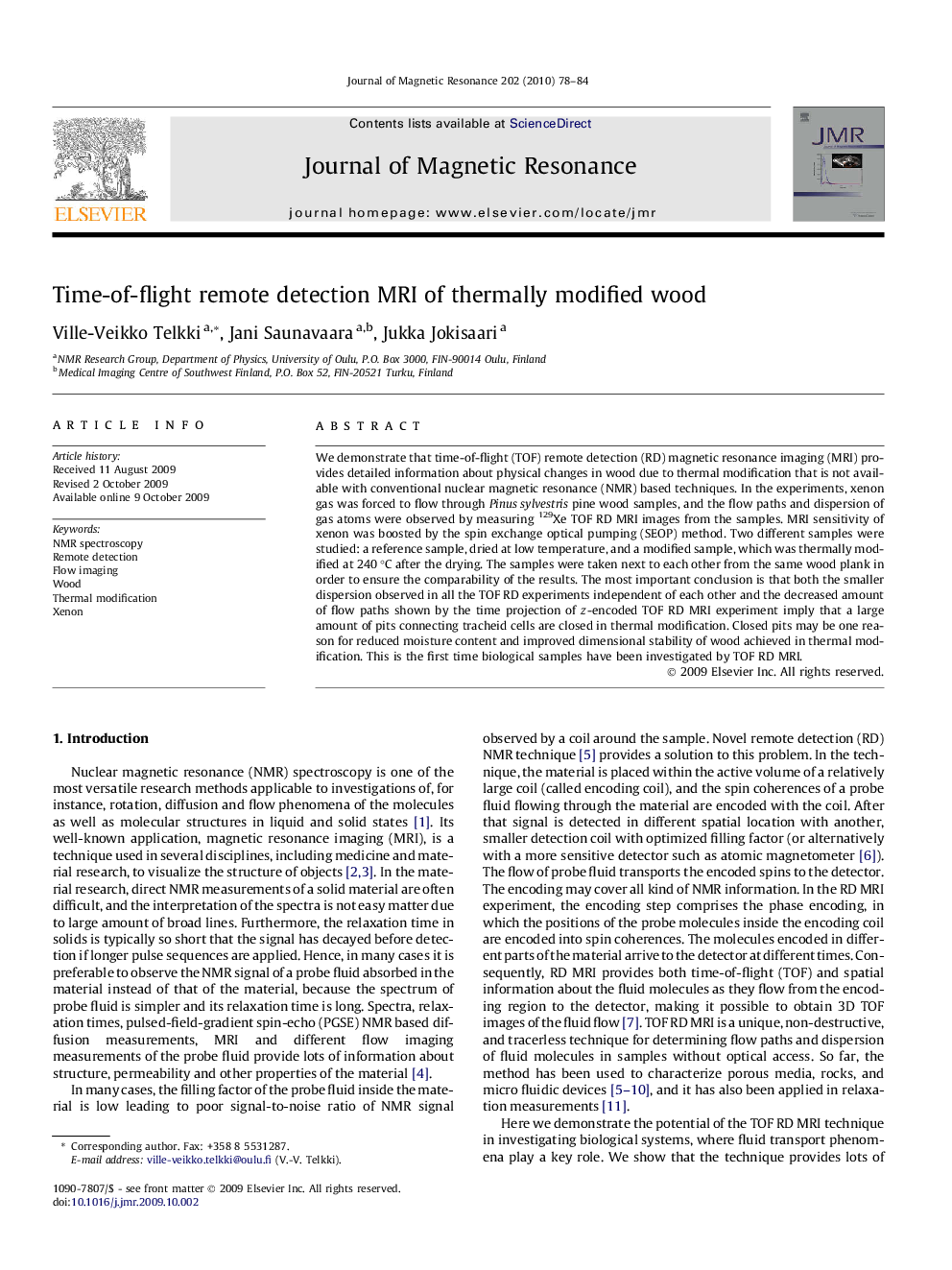| Article ID | Journal | Published Year | Pages | File Type |
|---|---|---|---|---|
| 5406655 | Journal of Magnetic Resonance | 2010 | 7 Pages |
We demonstrate that time-of-flight (TOF) remote detection (RD) magnetic resonance imaging (MRI) provides detailed information about physical changes in wood due to thermal modification that is not available with conventional nuclear magnetic resonance (NMR) based techniques. In the experiments, xenon gas was forced to flow through Pinus sylvestris pine wood samples, and the flow paths and dispersion of gas atoms were observed by measuring 129Xe TOF RD MRI images from the samples. MRI sensitivity of xenon was boosted by the spin exchange optical pumping (SEOP) method. Two different samples were studied: a reference sample, dried at low temperature, and a modified sample, which was thermally modified at 240 °C after the drying. The samples were taken next to each other from the same wood plank in order to ensure the comparability of the results. The most important conclusion is that both the smaller dispersion observed in all the TOF RD experiments independent of each other and the decreased amount of flow paths shown by the time projection of z-encoded TOF RD MRI experiment imply that a large amount of pits connecting tracheid cells are closed in thermal modification. Closed pits may be one reason for reduced moisture content and improved dimensional stability of wood achieved in thermal modification. This is the first time biological samples have been investigated by TOF RD MRI.
